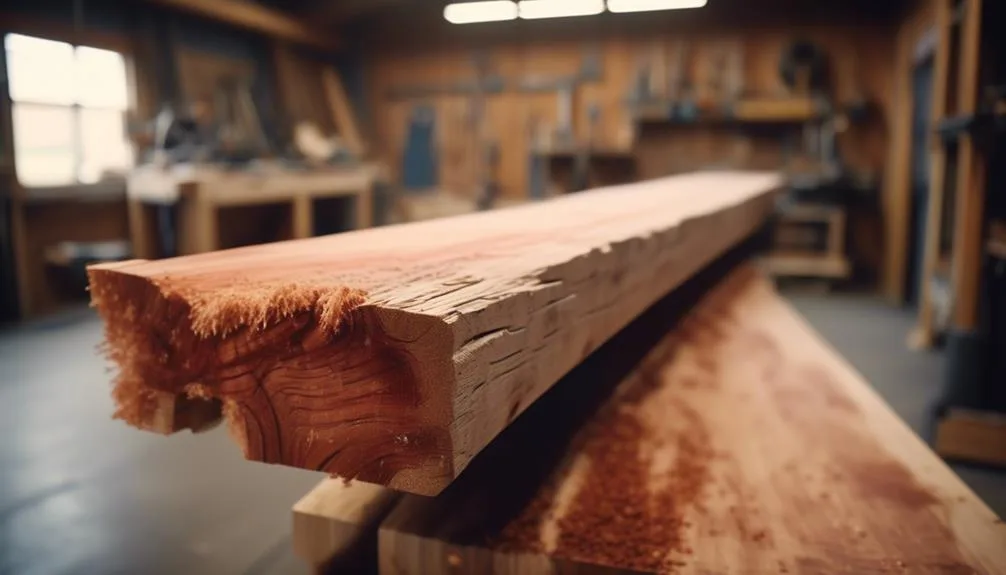When it comes to building, the type of wood you choose is important. Redwood lumber is known for its strength, durability, and resistance to decay and insects. Many people choose redwood for their construction projects because of these qualities.
In this article, we'll explore the benefits of using redwood lumber and help you decide if it's the right choice for your next building project.
Durability
How long can redwood lumber last in outdoor conditions?
Well, redwood is renowned for its exceptional durability. This wood has natural oils that make it resistant to decay, rot, and insects, giving it a lifespan of up to 25 years or more when used for outdoor projects like decks, fences, and outdoor furniture.
The durability of redwood is one of its most appealing features, as it requires minimal maintenance compared to other types of wood. With simple maintenance requirements, such as regular cleaning and applying a protective finish every few years, redwood can maintain its beauty and strength for decades.
Choosing redwood lumber for your outdoor projects not only ensures long-lasting beauty but also reduces the time and effort needed for maintenance, making it a practical and cost-effective choice.
Strength
When building with redwood lumber, you'll appreciate its impressive strength, which allows for sturdy and reliable outdoor structures. Redwood exhibits exceptional load bearing capacity, providing structural integrity for decks, pergolas, and outdoor furniture.
Its natural resistance to warping and shrinking enhances its tensile strength, making it a reliable choice for withstanding heavy loads and harsh weather conditions. Additionally, redwood boasts high flexural resistance, allowing it to maintain its shape and structural integrity over time.
This means that your redwood-built outdoor fixtures will remain strong and durable, requiring minimal maintenance. By choosing redwood lumber, you can be confident in the long-term stability and reliability of your outdoor constructions, thanks to its remarkable strength and resilience.
Resistance
Redwood lumber showcases impressive resistance to rot and decay, ensuring longevity and durability for your outdoor structures. When you choose redwood for your building projects, you benefit from its natural ability to withstand the elements and environmental stressors.
Here's why redwood is an ideal choice for your construction needs:
- Resistance to Decay: Redwood contains natural oils and tannins that protect it from decay, making it an excellent choice for outdoor applications.
- Resistance to Pests: The natural chemicals present in redwood make it resistant to pests such as termites and carpenter ants, reducing the need for chemical treatments and maintenance.
- Longevity: Due to its exceptional resistance to decay and pests, redwood structures have a longer lifespan, saving you time and money in the long run.
Sustainability
With its sustainable growth and regenerative properties, redwood lumber is an environmentally responsible choice for your building projects. Redwood is sustainably sourced, as it's primarily harvested from second-growth forests, ensuring the preservation of old-growth redwood trees. This approach minimizes the environmental impact by promoting the health and diversity of these ecosystems.
Additionally, redwood forests act as carbon sinks, sequestering carbon dioxide and mitigating climate change. By choosing redwood lumber, you're supporting a renewable and eco-friendly building material that aligns with your commitment to sustainability.
Its natural resistance to decay and insects further reduces the need for chemical treatments, making it an even more environmentally friendly option. Embrace the beauty and resilience of redwood lumber while also contributing to the preservation of our planet.
Cost-effectiveness
Considering the sustainability benefits of redwood lumber, its cost-effectiveness makes it a practical choice for your building projects. Redwood may have a higher initial cost compared to other types of lumber, but when you factor in its longevity and low maintenance requirements, it becomes a cost-effective option in the long run.
Moreover, the environmental impact of redwood lumber is minimal compared to other materials, as it's a renewable resource that requires less energy and chemicals for processing. Here's a cost comparison to help you understand the value of redwood lumber:
- Initial cost may be higher, but long-term savings due to durability
- Low maintenance requirements reduce ongoing expenses
- Environmental impact is minimal, leading to potential cost savings in the long term
Conclusion
In summary, redwood lumber stands as the optimal choice for construction due to its durability and natural resistance to decay and pests.
Additionally, redwood is known for its sustainability and cost-effectiveness.
Choosing redwood not only ensures a long-lasting structure but also reflects a commitment to both quality and environmental consciousness.
Mark Hoffman is a dedicated arborist and tree care specialist with over a decade of experience. His love for trees began when he visited Yosemite National Park as a teenager and was awestruck by the giant sequoias. Mark pursued his passion by studying forestry at Michigan Technological University, where he earned a Bachelor of Science degree.
Since then, he has worked tirelessly in the field of arboriculture, helping to preserve and protect trees in his community. His expertise and dedication have made him a respected leader in the industry and a valuable resource for anyone seeking advice on tree care.
